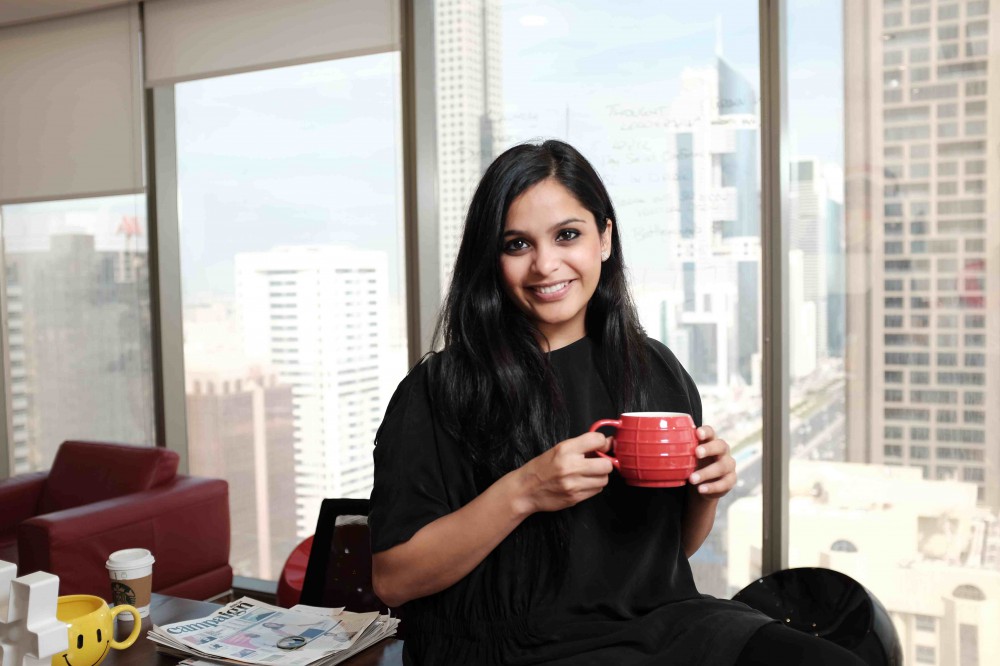News - Digital/Tech
The Rising Tide of Influence
by Iain Akerman
June 28, 2017

Everybody loves an influencer. At least, that’s what the numbers are increasingly indicating.
An estimated $570 million was spent (globally) on influencer marketing on Instagram alone last year, according to eMarketer, while 84 per cent of marketers plan to launch at least one influencer campaign within the next 12 months. If you didn’t know it already, influencer marketing is big business, and the Middle East is no exception.

“The popularity of social media influencers simply reflects the evolution of both social media platforms, as well as an advancement in marketer’s understanding of how to use the medium.” -- Shefali Vyas
“The popularity of social media influencers simply reflects the evolution of both social media platforms, as well as an advancement in marketer’s understanding of how to use the medium,” says Shefali Vyas, account director (social media) at Memac Ogilvy. “It’s worth remembering that very few people go to Facebook or Twitter or Instagram to be marketed to, so influencers are an effective means of reaching people through these media while still remaining in line with the core purpose of all of these platforms – socialising. The logic here is no different from that of a celebrity sponsorship, but instead of an overt endorsement that feels like an ad, influencers allow a brand to communicate about their product under the radar.”

“Influencers are able to help spread a brand message to an audience who are actively looking for ways to not see ads.” -- Simoné Dreyer
“An increasing number of our target audience (high earners and millennials) are installing ad blockers, so for me one of the main benefits is that influencers are able to help spread a brand message to an audience who are actively looking for ways to not see ads,” adds Simoné Dreyer, digital account director at Face to Face. “Influencers are the ones holding our target audiences’ attention.”
By and large, the most important platforms are Facebook-owned Instagram and Facebook itself. But as with any relatively new discipline, there are teething problems associated with influencer marketing. For example, what relevance do influencers have to the brand they’re promoting (often there’s none); how is influencer spend (or the lack thereof) being measured; and is short-termism (influencers and brands tend to jump far too often) undermining the whole category?
And then there’s effectiveness and measurement. Although 94 per cent of marketers who said they use influencers believe the tactic to be effective, according to Linqia’s ‘The State of Influencer Marketing 2017’, 78 per cent also said that determining the ROI of such campaigns is a top challenge.

“As with any other channel, influencer marketing needs more transparency and proper governance.”—Jad Hindy
“In my opinion, we have lots of influencer campaigns in our region that don’t start with a clear objective or KPI,” says Jad Hindy, regional head of innovation at FP7/MENA. “And that is a bad habit that weakens influencer marketing in general and tends to create more negativity around it. I’ve talked about the five benefits of using social media influencers before – brand awareness, authenticity, building trust, lead generation and reaching new target audiences – so depending on what the campaign objectives are those will be the things you will need to measure to understand if your campaign was successful or not, the spend is logical, and your ROI makes sense.”
To this end, FP7 sometimes creates unique codes for every influencer to help with the tracking of conversions, while technology is advancing and tools and platforms are emerging that help to monitor influencer campaigns and even analyse them.
“We should be creating KPIs the same way we do for any other media channel,” insists Dreyer. “If an influencer is charging a brand they should be kept to the same metrics as say Facebook or Google. What is the CPV [cost per view] or CPE [cost per engagement] or even VTR [view-through rate]? You need to be benchmarking your spend on influencers versus your spend on other digital channels to understand if it is more or less effective and optimise accordingly.”
Importantly, influencer marketing is being cracked down on globally. In April, the Federal Trade Commission in the US stated in a letter to marketers that an influencer’s “material connection to your company should be clearly and conspicuously disclosed”. Meaning hashtags such as #sp or #spon (to indicate sponsored content) do not meet disclosure requirements. Importantly, disclosure must also take place in the first three lines of any given post. Yet on Instagram in particular adherence to the clarified guidelines lies in the hands of influencers, not brands, as it is influencers who write the posts.
Similarly, the Advertising Standards Authority in the UK published new guidelines in March, stating that “marketing communications must be obviously identifiable as such”. Even Facebook has stated that it defines “branded content as a creator or publisher’s content that features or is influenced by a business partner for an exchange of value”. However, such content does not stand out anywhere near as much as paid advertising.
Essentially, there is a lack of understanding of what constitutes an ad and what doesn’t, and whether collaborations between brands and influencers should be signposted as such. What makes an Instagram post of an influencer with (or wearing) a product, for example, any different to a print ad?
“Transparency is key here and lack of it is what diminishes the role of influencer marketing and increases the risk of having a communication crisis,” says Hindy. “In our region, social media influencer marketing is still young and most of the influencers and brands aren’t being transparent. That is a big mistake and risk that both are taking. When an influencer is posting a piece of content that is paid for he or she should clearly specify that.”
Memac Ogilvy follows the WOMMA (Word of Mouth Marketing Association) code of ethics, which encourages best practices for transparency and honesty in social marketing. Other agencies following different guidelines, but not all of them.
“We are advocates of disclosing any paid advertising work,” says Vyas. “And when done well, an influencer campaign should not feel like an ad, it should simply feel like good content.” She adds: “There needs to be a greater focus on content development and meaningful collaboration in terms of messaging. The challenge with regard to influencers rests not with how influencers are being used, but with branding in general – oftentimes the poor utilisation of influencers usually reflects weak communication goals and poorly defined brand ‘personalities’.”
“Let’s start to signpost paid content,” continues Dreyer. “I think it will weed out the authentic influencers from the in-it-for-the-money ones. And hopefully, in the region we will then be left with influencers who work hard to integrate their sponsored messages into their stories without skipping a beat.”
Dreyer believes a lot of influencers in the region have lost their authenticity. And because the pool of influencers in this region is still quite small, it is obvious that some have gone from being early adopters of trends to sell outs.
“Influencer marketing is not going anywhere, if anything we are seeing more and more influencers popping up and taking advantage of the trend,” says Dreyer. “To mature I think it is up to brands to start finding influencers who are an authentic, natural fit and already enthusiastic about the product or brand. One thing I stay away from in choosing an influencer is the number of followers they have. Every social media channel has moved away from this metric and I think influencer marketing should follow suit. Follower count is not a measurement of an influencer’s success.”
So what next?
“As with any other channel, influencer marketing needs more transparency and proper governance,” replies Hindy. “And I believe as the market matures the fake influencers (and we have a lot of them that buy fake followers and fake engagements) will end up finding it harder and harder to compete and exist. And as always, in a relationship both parties should do their work to keep things moving forward; this is true in this case as well. Brands should do their homework before engaging with an influencer, and influencers need to do their homework as well before signing up with any brand.
“Both should be more transparent and honest. And the more systems we get to manage the relationship, identify the fake influencers from the real ones, measure the ROI, and establish logical and realistic rates the better this channel will do and the longer it will survive.”













